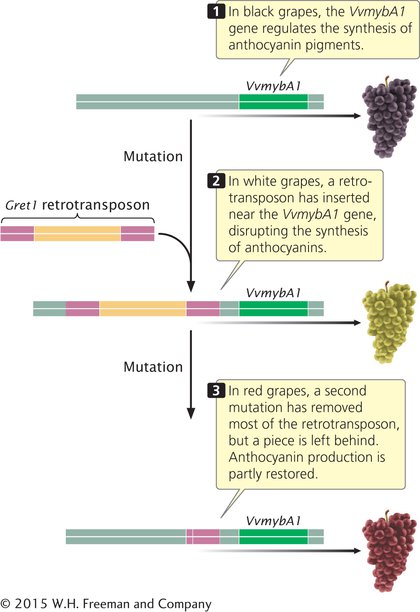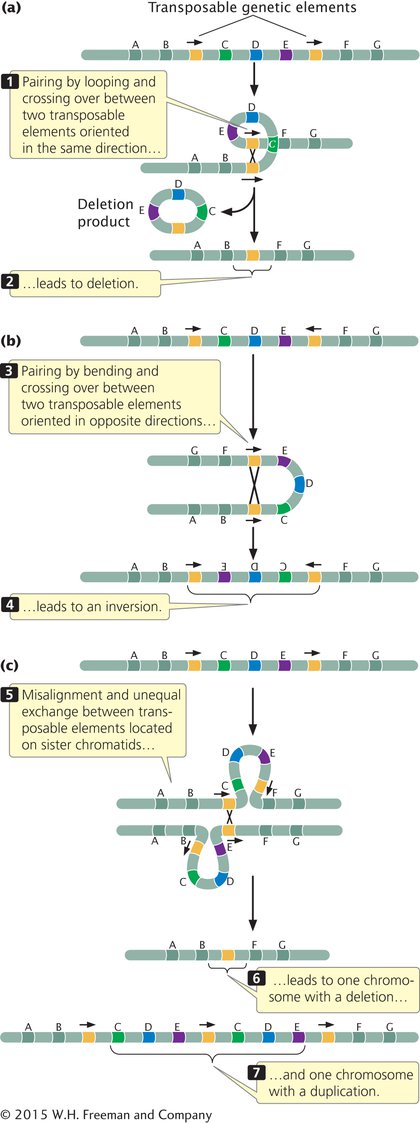The Mutagenic Effects of Transposition
Because transposable elements can insert into genes and disrupt their function, transposition is generally mutagenic. In fact, more than half of all spontaneously occurring mutations in Drosophila result from the insertion of a transposable element in or near a functional gene.
A number of cases of human genetic disease have been traced to the insertion of a transposable element into a vital gene. For example, insertion of the L1 transposable element into the gene for blood clotting factor VIII has caused hemophilia. Although most mutations resulting from transposition are detrimental, transposition can occasionally activate a gene or change the phenotype of the cell in a beneficial way. For instance, bacterial transposable elements sometimes carry genes that encode antibiotic resistance, and several transposable elements have created mutations that confer insecticide resistance in insects.
A dramatic example of the mutagenic effect of transposable elements is seen in the color of grapes, which come in black, red, and white varieties (Figure 13.24). Black and red grapes result from the production of red pigments, called anthocyanins, in the skin, which are lacking in white grapes. A mutation in black grapes that turned off the production of anthocyanins produced white grapes. This mutation consisted of the insertion of a 10,422-

363
Because transposition entails the exchange of DNA sequences and recombination, it often leads to DNA rearrangements. Homologous recombination between multiple copies of transposons also leads to duplications, deletions, and inversions, as shown in Figure 13.25.

TRANSPOSABLE ELEMENTS IN HUMANS As we have seen, about 45% of the human genome consists of sequences derived from transposable elements, although most of these elements are now inactive and no longer capable of transposing. A comparison of human and chimpanzee genomes suggests that almost 11,000 transposition events have taken place since these two species diverged approximately 6 million years ago.
One of the most common transposable elements in the human genome is Alu. Every human cell contains more than 1 million related, but not identical, copies of Alu in its chromosomes. Alu sequences are similar to the gene that encodes the 7S RNA molecule, which transports newly synthesized proteins across the endoplasmic reticulum. Alu sequences create short flanking direct repeats when they insert into DNA and have characteristics that suggest that they have transposed through an RNA intermediate.